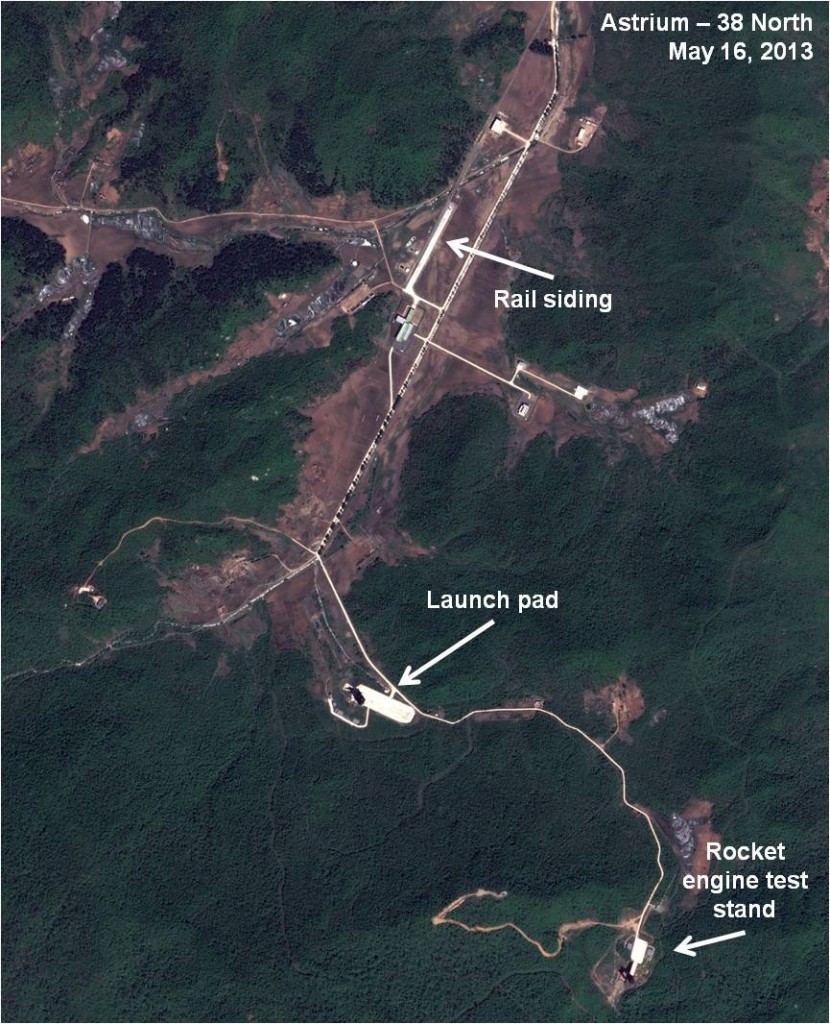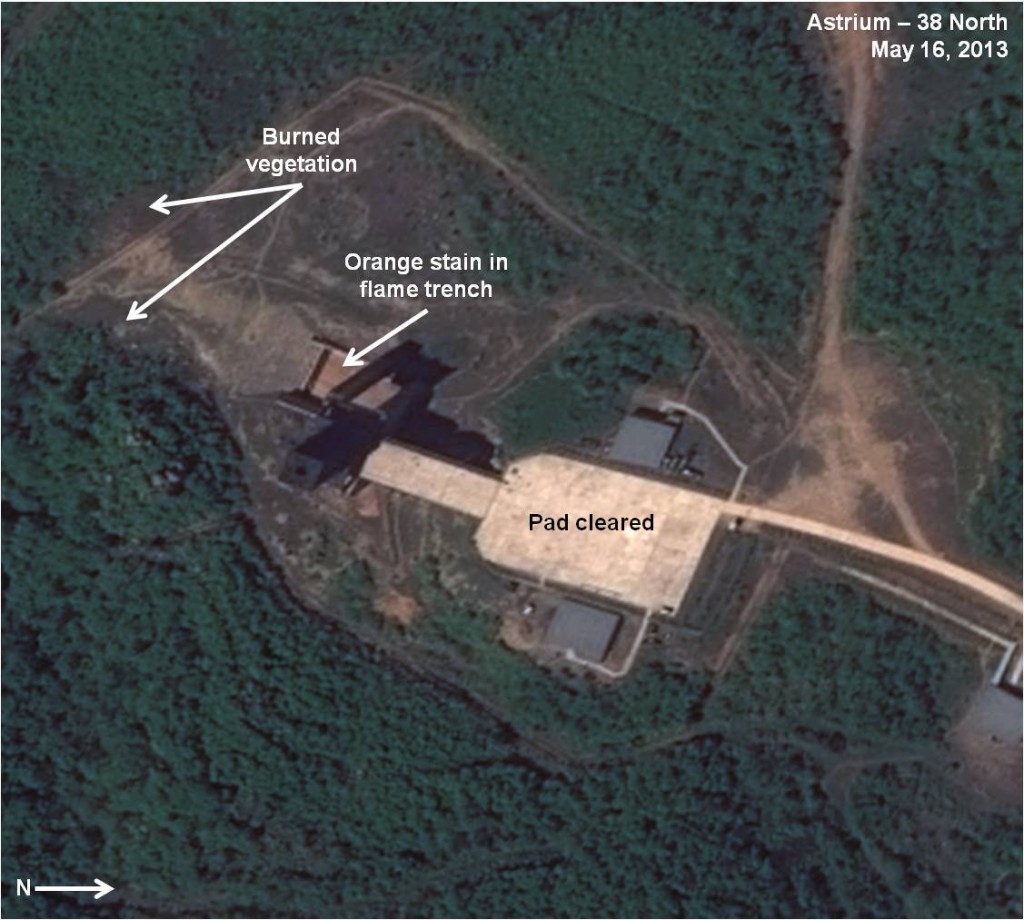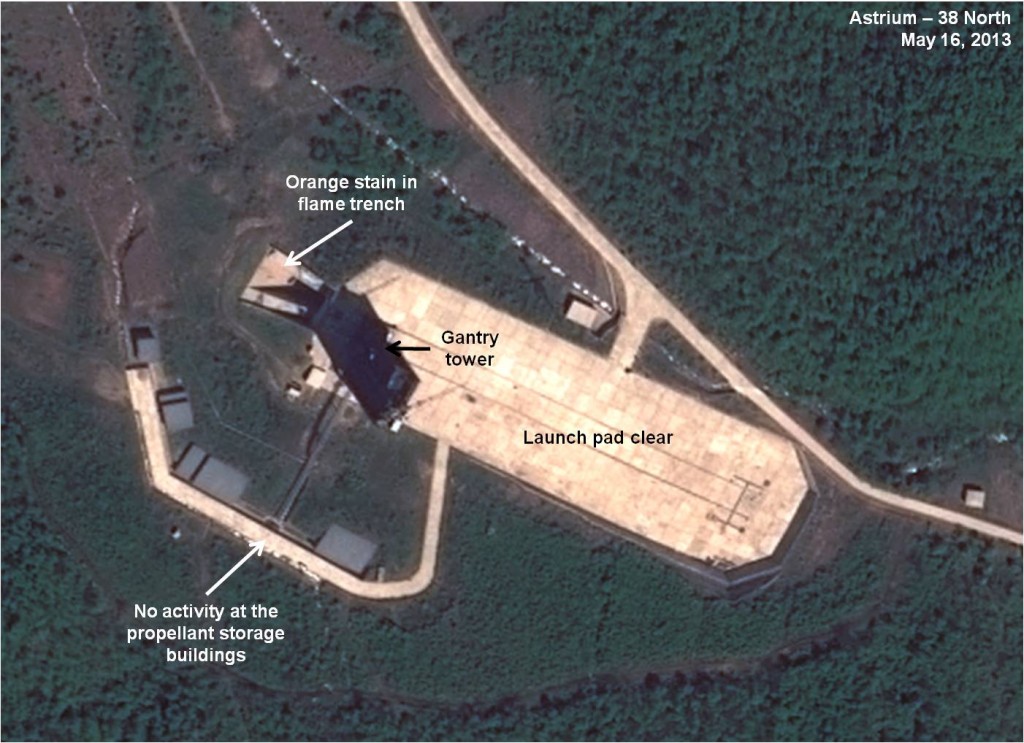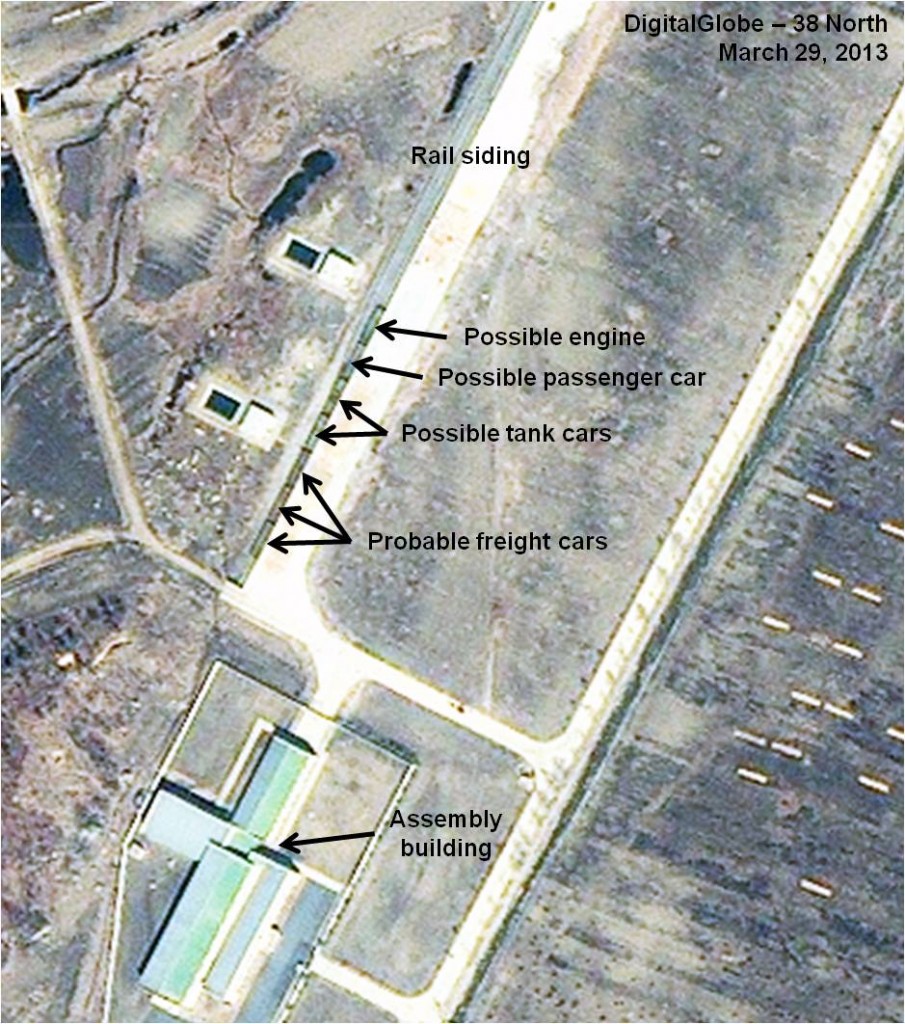New Long-range Rocket Engine Tests at North Korean Launch Facility: Development Continues
Summary
Satellite imagery of the Sohae Satellite Launching Station (also referred to as Tongchang-ri), where North Korea conducted two long-range rocket launches in 2012, indicates that Pyongyang tested a rocket engine in late March/early April 2013. The number of tests and the type of engine tested remain unclear. However, in view of the facility’s role since mid-2008 as the primary test site for North Korea’s Unha rocket, it may have been related to that space-launch vehicle (SLV). One possibility is that the test was part of Pyongyang’s effort to develop the recently announced Unha-9 (Taepodong-3), believed to be able to lift slightly heavier satellites into orbit.
The recent engine test indicates that Pyongyang continues to move forward with its SLV and long-range missile programs despite continuing United Nations sanctions and China’s public expressions of displeasure with the North’s efforts to further develop nuclear weapons and the missiles to deliver them. Rocket engine tests, while less visible, are also important in technology development.
Probable Rocket Engine Tests
The rocket engine test stand was the first facility completed at the Sohae Satellite Launching Station, the site of Pyongyang’s last two Unha-3 rocket launches in April and December 2012 (figure 1). Engine tests are a key part of efforts to develop space-launch vehicles and long-range missiles. The first engine test was probably conducted in June 2008 and was thought to have been for the Unha first stage. While it is difficult to determine if more tests were conducted from 2008 to 2011 due to a general lack of information, it is likely that several others occurred in the spring and summer of 2012 based on analysis of commercial satellite imagery.
Figure 1. The Sohae Satellite Launching Station.

Imagery also indicates that North Korea conducted one or more rocket engine tests in late March/early April 2013. As of March 4, there was no activity at the site (Figure 2).
Figure 2. No activity seen at the rocket engine test stand at Tonghae.

Three weeks later, however, it appeared that preparations for a rocket engine test were in progress (figure 3). Possible fuel tanks were on the pad and a crane necessary to offload them from trucks was also present. An unidentified red object—possibly a wind or sun screen to protect instruments intended to monitor an upcoming test—was visible inside the stand. However, the test does not seem to have taken place yet since no stain caused by flame and heat can be seen in the flame trench.
Figure 3. Probable engine test activity in progress at Tonghae.

On May 16, there was no pad activity but a distinctive orange stain is visible in the flame trench (figure 4). The color is the same as the stain in the flame trench at the location of the two Unha-2 launches, indicating that the rocket and the tested engine used similar propellants (figure 5). While it is not possible to identify the type of engine tested, in view of the facility’s role since mid-2008 as the primary engine and rocket test site for the Unha rocket, it was probably related to the Unha SLV. One possibility is that the test was part of Pyongyang’s effort to develop the recently announced Unha-9, believed capable of lifting slightly heavier satellites into orbit.
Figure 4. Sohae rocket engine test stand.

Figure 5. Sohae launch pad.

Imagery from March 29 also shows a seven-car train parked near the Sohae rocket assembly building (figure 6). Since there was no activity at the building or launch pad related to a pending rocket test, the train may have transported the engine(s), equipment, technicians, propellants and support vehicles to the site for the pending test. The train consisted of three freight cars, two probable tank cars, a passenger car and an engine.
Figure 6. Railcars at the Sohae siding.

